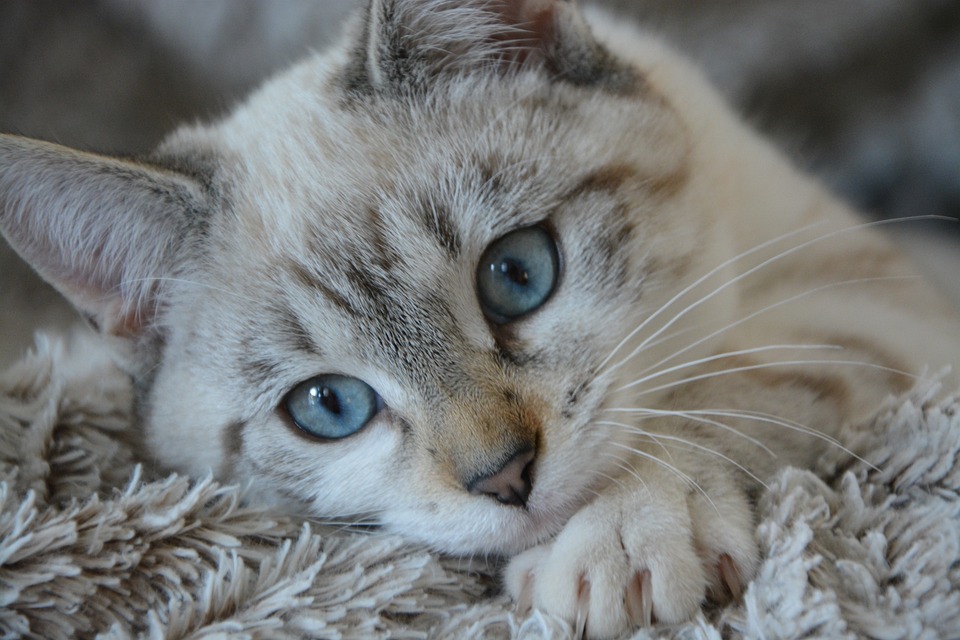Understanding Feline Eye Infections: Causes, Symptoms, and Treatment
Introduction:
Feline eye health is of utmost importance to ensure the overall well-being of our feline companions. Eye infections in cats are relatively common and can cause discomfort and potential complications if left untreated. In this article, we will explore the causes, symptoms, and treatment options for feline eye infections.
I. Causes of Feline Eye Infections:
Feline eye infections can be caused by various factors, including:
1. Bacterial infections: Bacteria, such as Chlamydia or Staphylococcus, can invade the cat’s eyes and cause infections.
2. Viral infections: Viruses, such as feline viral rhinotracheitis (herpesvirus) or calicivirus, can lead to eye infections in cats.
3. Fungal infections: Fungi, such as Aspergillus or Candida, can cause fungal eye infections, especially in cats with compromised immune systems.
4. Environmental factors: Exposure to allergens, pollutants, or foreign bodies can irritate the eyes and lead to infections.
5. Trauma or injury: Scratches, bites, or other types of trauma to the eyes can introduce bacteria or viruses and cause infections.
II. Symptoms of Feline Eye Infections:
It is essential for cat owners to be vigilant and look out for the following symptoms that may indicate a feline eye infection:
1. Redness and irritation: The affected eye may appear red, inflamed, or swollen.
2. Excessive tearing or discharge: Cats with eye infections may have watery or thick discharge coming from their eyes.
3. Swollen or puffy eyelids: The cat’s eyelids may appear swollen or puffy.
4. Cloudy or hazy appearance: The affected eye may have a cloudy or hazy appearance.
5. Squinting or pawing at the eyes: Cats with eye infections may squint or paw at their eyes due to discomfort.
6. Changes in behavior or appetite: Eye infections can cause cats to become lethargic, lose their appetite, or exhibit a change in behavior.
III. Types of Feline Eye Infections:
Several types of eye infections can affect cats. Some common ones include:
1. Conjunctivitis (Pink eye): Conjunctivitis is the inflammation of the conjunctiva, the thin membrane that covers the front of the eye and the inner surface of the eyelids.
2. Keratitis (Corneal inflammation): Keratitis refers to inflammation of the cornea, the clear, dome-shaped surface that covers the front of the eye.
3. Uveitis (Inflammation of the middle layer of the eye): Uveitis is the inflammation of the uvea, which includes the iris, ciliary body, and choroid.
4. Chlamydiosis (Chlamydia infection): Chlamydiosis is a bacterial infection caused by Chlamydia felis and can lead to severe conjunctivitis in cats.
5. Herpesvirus (Feline viral rhinotracheitis): Herpesvirus is a common viral infection in cats that can cause respiratory and ocular symptoms.
IV. Diagnosis and Treatment of Feline Eye Infections:
If you suspect that your cat has an eye infection, it is crucial to seek veterinary care for proper diagnosis and treatment. The veterinarian will perform a thorough examination, including a history review and an ocular examination. Additional tests, such as laboratory tests or cultures, may be necessary to determine the underlying cause of the infection.
Treatment options for feline eye infections may include:
– Prescription medications: Depending on the type of infection, your veterinarian may prescribe antibiotics, antivirals, or antifungal medications to combat the infection.
– Topical treatments: Eye drops or ointments may be prescribed to help alleviate symptoms, reduce inflammation, and combat the infection directly.
– Home care and prevention: It is essential to follow your veterinarian’s instructions for administering medications and providing appropriate home care. Keeping your cat’s living area clean, avoiding exposure to potential irritants, and ensuring regular veterinary check-ups can help prevent and manage eye infections effectively.
FAQs about Feline Eye Infections:
Q1: Are feline eye infections contagious to humans?
A1: Most feline eye infections are not transferable to humans. However, it is always best to practice good hygiene and wash your hands after handling an infected cat to minimize any potential risks.
Q2: Can I use over-the-counter eye drops for my cat’s eye infection?
A2: It is crucial to consult a veterinarian before using any over-the-counter eye drops, as they may not be suitable for your cat’s specific infection and could potentially worsen the condition.
Q3: Can I prevent my cat from getting an eye infection?
A3: While it’s not always possible to prevent eye infections entirely, you can reduce the risk by keeping your cat’s living area clean, avoiding exposure to potential irritants, and ensuring regular veterinary check-ups.
Q4: How long does it take for a feline eye infection to heal?
A4: The healing time can vary depending on the type and severity of the infection. Mild cases may resolve within a week, while more severe infections may require several weeks of treatment and monitoring.
Q5: Are there any natural remedies for feline eye infections?
A5: It is always recommended to consult with a veterinarian for proper diagnosis and treatment. While some natural remedies may provide temporary relief, they are not a substitute for professional veterinary care.
Conclusion:
Feline eye infections can be uncomfortable and potentially harmful to our feline companions if left untreated. It is crucial to seek veterinary care if you suspect your cat has an eye infection. Regular veterinary check-ups and good hygiene practices, along with prompt diagnosis and treatment, can help prevent and manage these infections effectively, ensuring the overall well-being of our feline friends.








